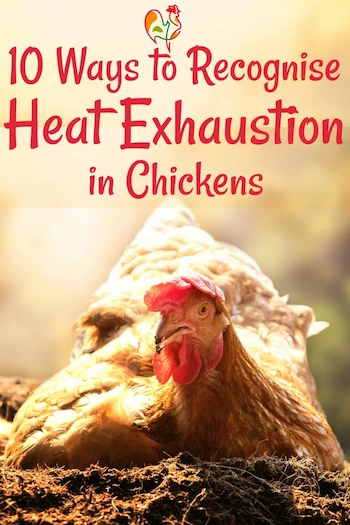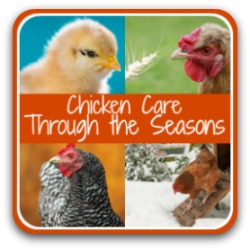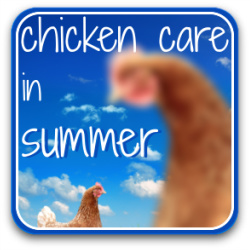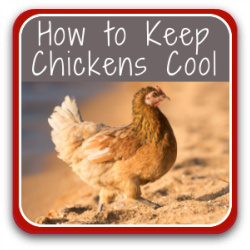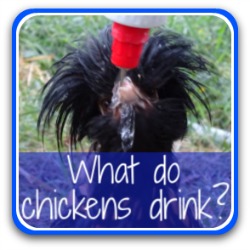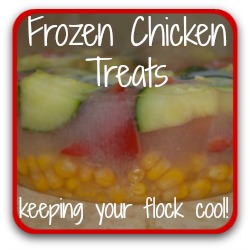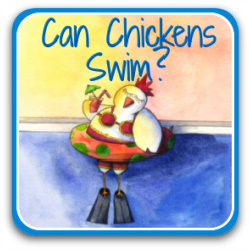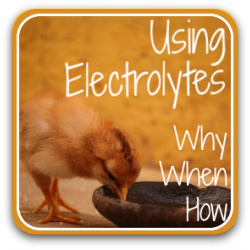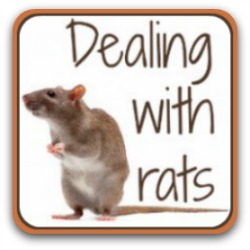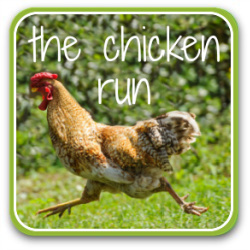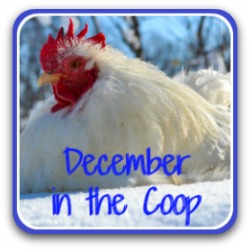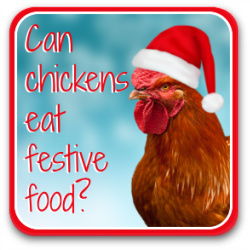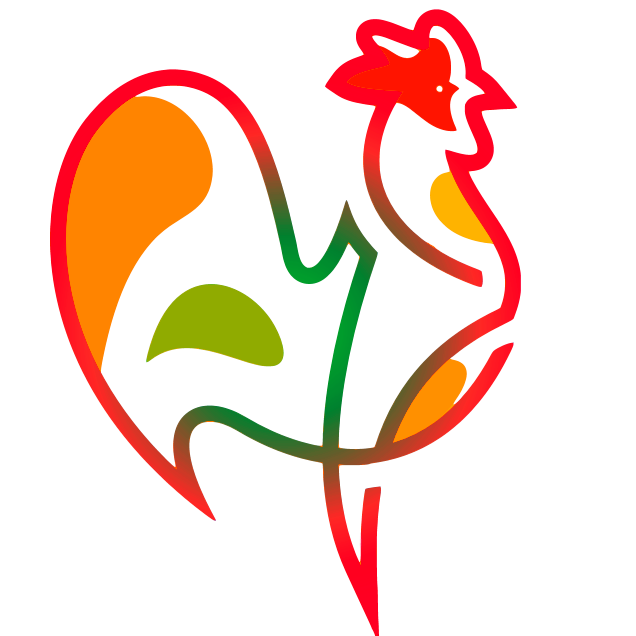10 simple ways to recognise heat exhaustion in chickens.
Why it's potentially fatal, how to spot it in time and what to do.
Learning about how heat affects chickens is a potential life-saver – and it's never too early to start thinking about it.
Heat exhaustion and heat stroke can creep up very quickly, and can be fatal if not caught in time. That's why it's critical to recognise the warning signs.
In this article, we'll look at how to tell if your flock is becoming badly affected by the heat.
Then we'll look at some easy steps to help you care for your girls (and boys) just as well in summer heat as you do in winter cold.
Go there now if your chickens need help fast!
Why is recognising heat exhaustion important?
A chicken's normal body temperature(1, 3) is between 40ºC and 41ºC (104ºF and 107ºF). But unlike humans they don't have sweat glands, so they have limited ways to cool themselves down.
Cold weather isn't generally a problem. Their feathers do a great job of keeping them warm, even in cold winter climates.
But heat is different, and can become serious very quickly.
In humid areas (where humidity is above 50%)...
- temperatures above just 20ºC (68ºF) will cause some mild heat stress
- above 25ºC (77ºF), heat exhaustion increases rapidly
- at 30ºC (86ºF) the bird will not be able to lose heat fast enough, which puts then in danger of heat stroke.
In dry climates chickens can survive (though not necessarily comfortably) in temperatures up to 40ºC (104ºF).
But at that point, heat stress can escalate quickly and become heat stroke, which is often fatal if not managed properly.
That's why it's so important to know the warning signs of heat exhaustion, and how to act quickly when you spot them.
Could you use a little extra help this summer?
Every year, I send my my "Chicken Digest" subscribers a free, 30-tip printable checklist: simple, practical ideas to keep chickens safe in the heat.
It's not published anywhere else – just one of my little "thank yous" for being part of my chicken keeping community.
Why does it happen?
Some breeds are better equipped to deal with hot weather than others(2).
- Breeds that come from cooler, more temperate climates tend to struggle more in the heat – an important thing to bear in mind when choosing your flock.
- Older chickens may adapt if temperatures rise gradually, but a sudden spike will cause them to suffer.
- Heavy breeds will be next in line. Broilers – birds bred for meat – will show signs of heat exhaustion much more quickly than layers.
- And broiler chicks (between 6 and 8 weeks old) have been shown to be even more badly affected than adults(4).
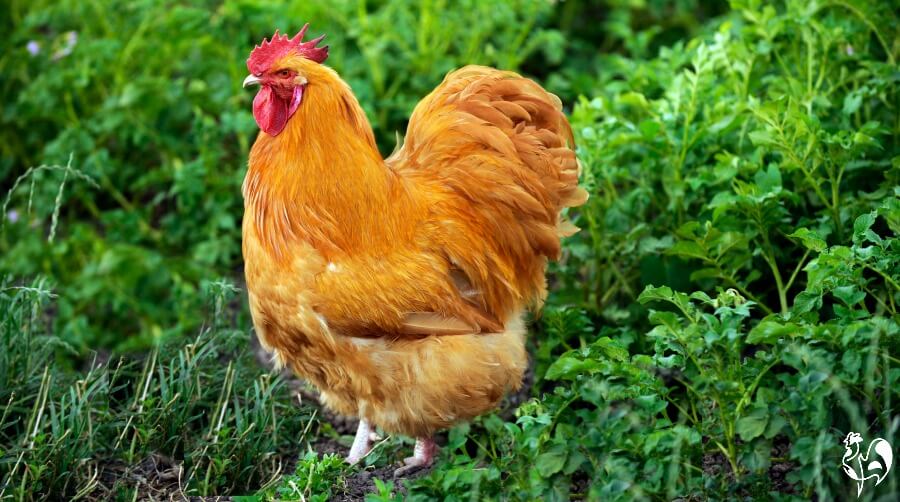 Heavier breeds like this Buff Orpington don't do as well in hot climates.
Heavier breeds like this Buff Orpington don't do as well in hot climates.How to tell if your flock is suffering from heat exhaustion.
These ten symptoms are listed in order of seriousness, 10 being the most severe. The further along your chickens are, the worse the outcome is likely to be.
Heat exhaustion: initial signs.
1. Panting
The first and most obvious sign of heat stress.
If they don't lose body heat in warm weather, chickens keep heating up. Their feathers, which are so efficient at keeping them warm in the winter, also trap heat in the summer.
Since chickens don't have sweat glands, they rely on evaporation through their respiratory system. In other words, they pant.
A panting chicken is easy to spot: her beak will be open and pushing out moist air, but not making any noise.
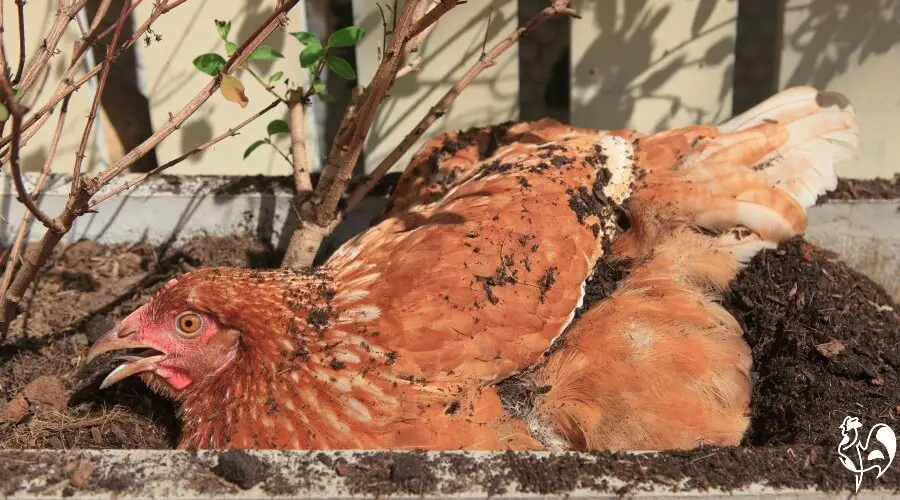 One of my Red Stars controlling her temperature by panting and dust-bathing.
One of my Red Stars controlling her temperature by panting and dust-bathing.2. Rapid breathing.
Closely related to panting, this happens when humidity levels are high.
Because the air she's breathing out is already full of moisture, it's hard to expel. To compensate, her breathing increases from a normal 20 breaths per minute to as much as 240.
That's a huge jump, and it creates a vicious cycle: faster breathing uses more energy, which produces more heat.
So the problem can escalate very quickly.
Links on the rest of this page are "affiliate links". If you click on them and buy, I earn a small commission at no cost to you. I only recommend products I know and love and which I think will be genuinely useful to you. See my disclosure policy for more information.
3. Loss of electrolytes.
This one is the silent killer.
You can't see it happening, but when chickens lose moisture they also lose the vital electrolytes which help their bodies function properly.
Think of electrolytes as the power source that keeps your chicken going – a kind of chicken Gatorade.
Those levels dropping can cause kidney problems, weaken the immune system and leave chickens more prone to disease, particularly respiratory infections.
It also depletes calcium stores, which can lead to soft-shelled eggs (see symptom 8 below).
That's why I always keep a bottle of electrolyte powder in my chicken first aid kit. When temperatures soar, I add it to their drinking water. That's especially important if there are baby chicks in the flock.
4. Wings are outstretched and feathers more erect.
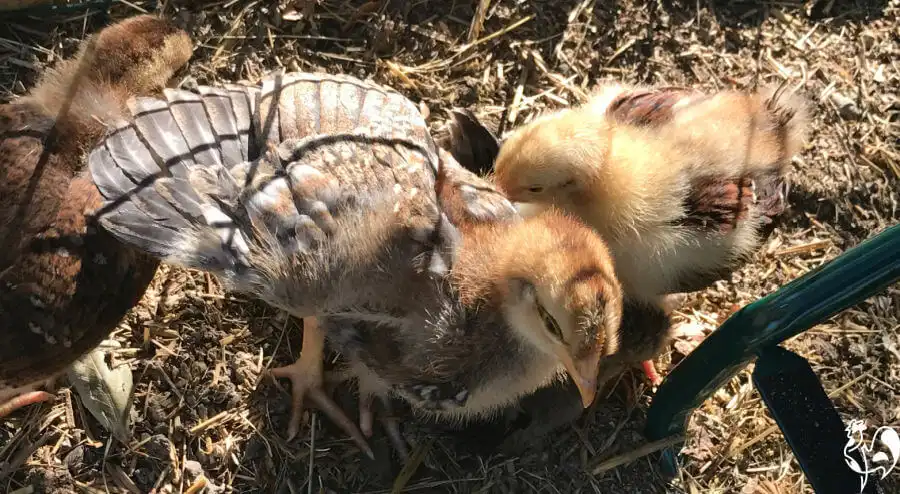 One of my 3-week old chicks keeping cool by outstretching his wing.
One of my 3-week old chicks keeping cool by outstretching his wing.This is the chicken's way of trying to cool down – by exposing more skin to cooler air, instead of trapping heat under the feathers.
You'll often see this posture in hens while they're dust-bathing. In lower temperatures they will just hold the wings away from the body. As temperatures rise it can look like they're dragging one or both wings along the ground.
🎥 Watch: 5 simple ways to prevent dehydration.
Preventing further problems can be dealt with relatively easily at this point, before your chickens deteriorate further.
Here's a short video with five quick, inexpensive tips you can action right now to keep your chickens well hydrated during the heat of summer.
Heat exhaustion: critical stages.
5. The chicken stops eating, and drinks large amounts of water.
A panting chicken can't eat as much as it should. It's that simple.
Chickens naturally eat less in hot weather, but if your feed levels drop dramatically it's worth paying attention. Watch for individuals who seem to be missing mealtimes.
When it comes to drinking water, overheated chickens can drink four to five times as much as usual. Make sure your waterers are topped up frequently – they may empty more often than you expect.
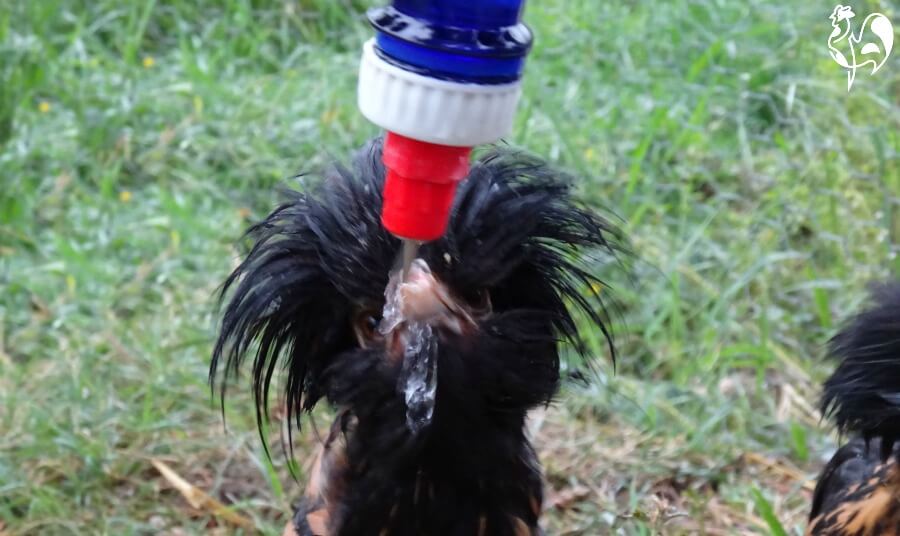 One of my Polish chicks guzzles extra water to keep hydrated on a hot summer's day.
One of my Polish chicks guzzles extra water to keep hydrated on a hot summer's day.6. Diarrhea.
This is directly related to increased water intake. When chickens drink more, their droppings naturally become looser and more watery.
Why does this matter? Because more liquid loss equals yet more electrolyte loss, which weakens the immune system and leaves them more vulnerable to disease.
7. The chicken becomes listless, droopy and disinterested.
It's not surprising really – think about how you feel in a heatwave.
At this point your hens are losing electrolytes, barely eating, expelling a lot of waste and becoming increasingly dehydrated. They will start to look flat, sluggish and withdrawn – all signs of moderate to severe heat exhaustion.
8. Egg production drops, and shells become thin or soft.
By now, your chicken's body is stressed and out of balance.
She's eating less, breathing harder and expelling more waste products. She's using up her stores of protein, fats and carbohydrates just to get through the day.
She no longer has enough calcium supplies to lay, and those eggs she does lay may have thin or soft shells.
And soft shelled eggs cause their own problems including egg binding or even internal breakages.
Never seen a soft-shelled egg?
Here's a short video from my friend, Tim Daniels of PoultryKeeper.com, showing exactly what they look like.
Heat exhaustion: final stages.
9. Staggering, disorientation and seizures.
At this point, a chicken is likely to be very severely dehydrated. Immediate action is essential if you're to have any hope of saving her.
Her system is starting to shut down. Without action, death will quickly follow.
10. Collapse of system and death.
When heat exhaustion reaches this stage there's sadly little to be done. The extreme loss of water and electrolytes has disrupted the body's chemistry so badly that the heart and lungs can no longer function.
The goal, of course, is to recognise and treat symptoms long before they reach this point.
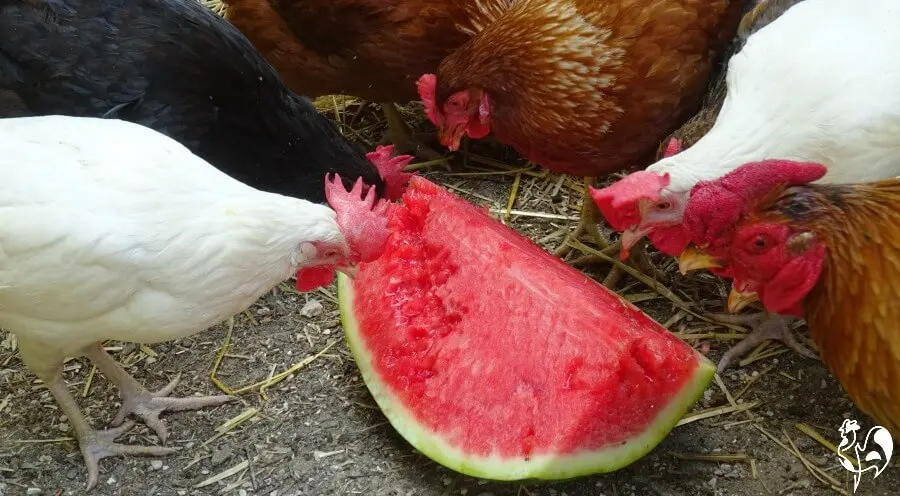 Offer treats high in liquid – watermelon hits the spot for my flock!
Offer treats high in liquid – watermelon hits the spot for my flock!Can heat exhaustion in chickens be prevented?
Of course. You'll find full details in my article about how to keep chickens cool.
Here's a quick summary of things you can do right now.
1. Always provide lots of water in several places around the chicken run.
2. Start the day with a block of ice in the waterer – it helps keep water cool for longer.
3. Offer plenty of shade. Plant trees if possible. In the meantime, add a UV-resistant tarpaulin to your run. It can double up as a wind break in the winter.
4. Make sure they have a dust-bathing area. It helps them cool down naturally.
5. Keep a store of poultry electrolytes, or make your own.
6. Avoid high protein foods, and do not use apple cider vinegar in hot weather. Both increase metabolism and body heat.
7. Give hydrating treats such as watermelon, and keep a few frozen options for really hot days.
8. Apples are a proven cooling treat for chickens at times of extreme heat stress – here's why.
Other summer problems with chickens?
Summer time can bring other problems with our flocks. These articles may help you sort some of them out. Just click on the pics.
Sources.
I make every effort to provide readers of my site with information which has been confirmed by scientific, peer-reviewed research, particularly where health issues are concerned.
For this article, some of the most helpful sources are:
1. Borges, S.A., et al: 'Physiological responses of broiler chickens to heat stress and dietary electrolyte balance'. Pub. Oxford Journal of Poultry Science, 2004.
2. Gail Damerow: The Chicken Encycolpaedia: an Illustrated Reference.
3. Rural Chemical Industries Ltd: 'Thermoregulation in poultry'. Pub. Heatstress in Livestock.
4. Tirawattanawanich, C., et al: 'The effects of tropical environmental conditions on the stress and immune responses of commercial broilers, Thai indigenous chickens, and crossbred chickens'. Pub. The Journal of Applied Poultry Research, 2011.
